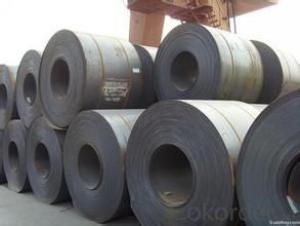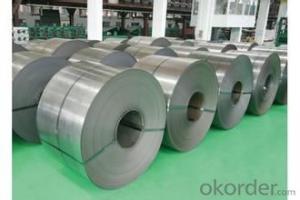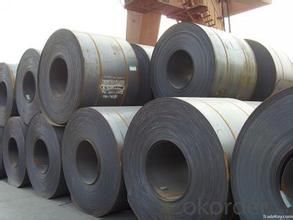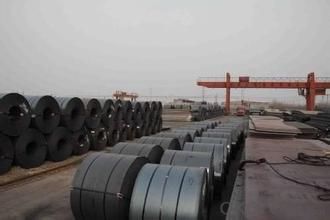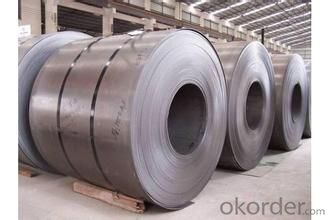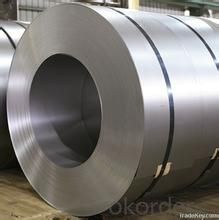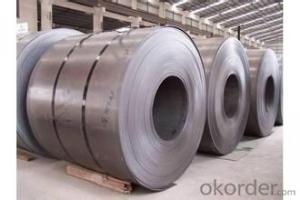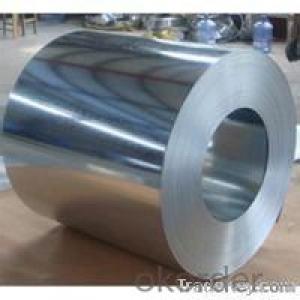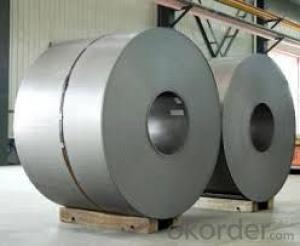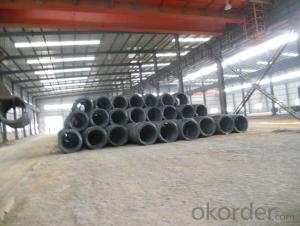Hot Rolled Steel plate Sheet - SAE 1006/1008
- Loading Port:
- Tianjin
- Payment Terms:
- TT OR LC
- Min Order Qty:
- 20 m.t.
- Supply Capability:
- 500000 m.t./month
OKorder Service Pledge
OKorder Financial Service
You Might Also Like
Description of hold rolled steel coil:
Rolled to its final dimensions while it’s hot enough to scale, our hot-rolled steel is an amalgamation of the various qualities of steel. It can be in the form of plates, sheets and coils.
Specifications of hold rolled steel coil:
Product: | Hot Rolled Steel Coils/Sheets |
Material: | Q195,Q235,A36,SS400,S235JR,Q345,ST37-2, CCSB etc |
Standard : | JIS G3002 GB/T251B |
Technique: | hot rolled |
Thickness | 1.2mm to 200mm |
Tolerance of thickness: | :+/-0.03mm |
Width: | 750mm-2000mm |
Tolerance of width: | :+/-5.00mm (aiming to +/-2.00mm) |
Normal width: | 914mm, 1000mm, 1200mm, 1219mm, 1250mm,1500mm |
Length: | According to requirement |
Coil ID: | 508mm-610mm |
Coil Weight: | 10-25 Metric Tons |
Surface: | Black, Chromate, fingerprint resistant treatment, slight oiled or non-oiled, dry |
Port of Loading: | Tianjin/Shanghai port |
Packaging Details: | Standard export packing or according to the clients required |
Delivery Time | Within 30 days after received 30% deposit or workable L/C |
Payment Terms: | L/C,T/T |
Images of hold rolled steel coil:
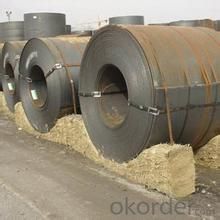

Our Hot-Rolled Steel Sheets and Coils are applied to a wide range of uses such as automobile, electrical appliance, machinery manufacturing, container manufacturing, shipbuilding, bridge, pipeline, and receive high acclaim from our customers for its excellent quality.
- Q: Consider a steel rod of diameter 4.5 mm and length 3.3 m. If a compressive force of 4900 N is applied to each end, what is the change in the length of the rod?
- You need to calculate the stress on the rod and compare this with the mechanical properties of the steel. It would help if you were given more info. You will need to know something about the steel such as the yeild stress and E, the modulus of elasticity. The value of E is about the same for a wide range of steels. So long as the applied stress is below the yield stress, the strain is all elastic and is calculated from E. The real answer is that you can not answer this question since you do not know what the temperature is. Given the applied load, the change in length will be much different at room temperature than at 1500C.
- Q: i have a guitar with three nylon three steel strings. Am i able to replace the nylons with steel strings?
- Depends okorder Classical guitars aren't able to handle the tension of steel strings for the most part. Be careful with deciding which type and gauge string to put on certain guitars.
- Q: I went to the store to get metal to make a knife and they had weldable steel and plate steel. Which one would be best/ which steels would be best for what i want to do?
- 'Plate' does not refer to a specific alloy. It simply describes the shape in which the metal is sold. Various steel alloys have varying degrees of weldability. Some weld well, with good strength. Others weld poorly, and crack or become very weak. Try looking up information on the specific alloy of steel.
- Q: Or is it a coating that is applied? If so what types of steel? Or what types of coatings?
- No, usually they are just coated or galvanized. To make a steel that is truly more corrosion resistant raises it's cost quite markedly, where as coatings are pretty cheap. Almost all structural steel is just A36 mild steel (like 0.1% carbon, 0.05% Mn, and not much else). There are higher grades of structural steel, and bridges are made with truly more corrosion resistant carbon steels, but for a house it's just not the case.
- Q: How are steel coils processed for different levels of hardness?
- Steel coils can be processed for different levels of hardness through a combination of heat treatment and mechanical processes. To increase the hardness, the coils undergo a process called quenching and tempering. This involves heating the steel to a specific temperature, followed by rapid cooling (quenching) to create a hardened structure. Subsequently, the coils are reheated to a lower temperature and held there for a specific duration (tempering) to achieve the desired level of hardness. Other mechanical processes, such as cold rolling or cold drawing, can also be employed to further enhance the hardness of the steel coils.
- Q: Why is steel a stiff material?I'm doing a project on the use of steel in the construction of skyscrapers - and obviously, for the inner steel skeleton of a skyscraper the steel support beams and girders will have to be stiff so that they don't fall apart or the building doesn't shake due to wind or other natural forces.But in my research I've found that steel (mild steel to be more exact) is ductile and malleable, meaning it can be shaped fairly easily. However, how can steel ALSO be stiff - the definition of stiffness is the tendency to withstand bending and stretching - so my question is. How can this material be BOTH ductile/malleable, AND stiff? and why? :)Thank you in advance if anyone takes the time to answer this, would be appreciated - I'll give you 10 points straight away if the answers conclusive
- Steel is NOT stiff. In fact it is worldly accepted metals (steel is a metal) are not rigid in mechanical terms, and rigid means stiff. Steel easy to shape, but is strong and therefore hard to break. Thermosetting polymers (hard plastic) which is stiff, is in fact easy to break (weak) and also hard to reshape without changing its state (solid to liquid). Whoever told you steel is stiff is wrong and possible meant steel is strong, or you misheard/misunderstood.
- Q: What are the common coil widths available for steel coils?
- The specific application and industry requirements determine the different available coil widths for steel coils. However, the steel industry commonly offers several standard coil widths. These standard widths include: 1. Approximately 24 inches (610 mm): This coil width is frequently used in various applications, including automotive manufacturing, construction, and general engineering. 2. Approximately 36 inches (914 mm): The construction industry often employs this wider coil width for roofing and siding materials. 3. Approximately 48 inches (1219 mm): Manufacturing processes that require larger steel sheets, such as the production of appliances, HVAC systems, or industrial machinery, commonly employ this wider coil width. 4. Approximately 60 inches (1524 mm): Specialized applications in industries like automotive manufacturing, aerospace, or shipbuilding typically use this wider coil width. It is important to acknowledge that these are just some of the more common coil widths. Steel mills or suppliers may offer custom widths to meet specific customer requirements. Moreover, the availability of coil widths can vary depending on the supplier or steel mill.
- Q: How are steel coils used in the manufacturing of furniture?
- Steel coils are commonly used in the manufacturing of furniture to provide structural support and stability. They are often used in the construction of sofa frames, mattress springs, and chair bases, ensuring durability and longevity. Additionally, steel coils can enhance the comfort of furniture by offering resilient and responsive cushioning, contributing to a more enjoyable seating experience.
- Q: How are steel coils protected from extreme weather conditions?
- Steel coils are typically protected from extreme weather conditions through the application of a weather-resistant coating or paint. This coating acts as a barrier, shielding the steel from moisture, UV radiation, and other environmental elements that could cause corrosion or damage. Additionally, steel coils may be stored in covered or enclosed areas to further protect them from rain, snow, and other severe weather conditions.
- Q: Is this a strong, durable piece of steel that can take abuse? I'm thinking about using it on a small project.
- I think it might be a bit brittle and could break from metal fatigue.
Send your message to us
Hot Rolled Steel plate Sheet - SAE 1006/1008
- Loading Port:
- Tianjin
- Payment Terms:
- TT OR LC
- Min Order Qty:
- 20 m.t.
- Supply Capability:
- 500000 m.t./month
OKorder Service Pledge
OKorder Financial Service
Similar products
Hot products
Hot Searches
Related keywords
